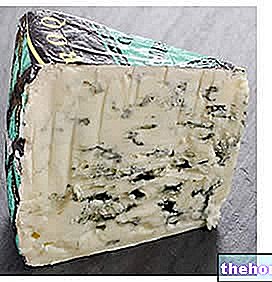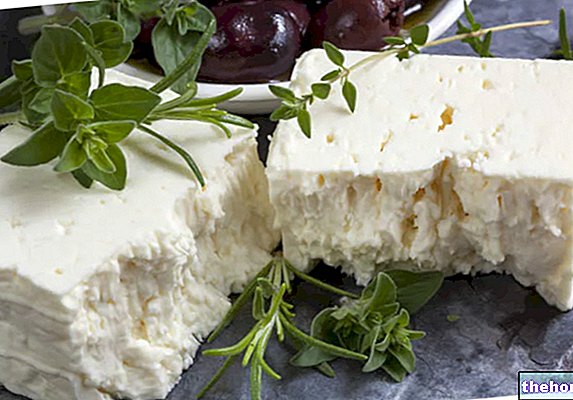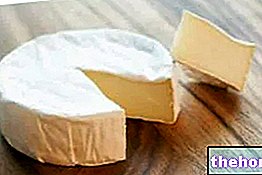What is Gouda?
The gouda (goudse kaas) is a famous Dutch hard cheese made from cow's milk.
It takes its name from the place where it has been marketed for many centuries, namely the historic city of Gouda, in South Holland. The first written mention of the cheese dates back to 1184 AD, making it one of the oldest known cheeses. Even today, gouda is by far one of the best known and most consumed cheeses in the Netherlands.

Gouda is produced in circular shapes weighing between 1 and 16 kilograms. It has a fat content of around 32% (50% of dry matter) and also contains minerals and vitamins.
The term gouda is rather general and - both in Holland and in the world - gives its name to various hard cheeses, even quite different from each other. In fact, there are many who argue that the term "gouda" refers more to a dairy style rather than to a specific type of cheese, since the flavor of the various foods changes considerably with respect to aging (according to which, six categories are identified ).
Only recently (October 2010), the European Commission assigned the title of Protected Geographical Indication (PGI) to the cheese produced in Gouda, with the name of “Gouda Holland”.
Nutritional Characteristics
Gouda is a product that belongs to the II group of foods; its main function in the diet is to provide proteins rich in essential amino acids, calcium, phosphorus and vitamin B2.
Gouda is a cheese made from whole cow's milk; therefore, it brings a very high amount of energy. In fact, the calories come mainly from lipids, followed by peptides and finally by small amounts of carbohydrates. The fatty acids contained in gouda cheese are mainly saturated, the proteins have a high biological value and simple carbohydrates (lactose).
Fibers are absent and cholesterol is abundant.
The saline profile of gouda does not differ from the average of cheeses and is abundant in calcium, phosphorus and sodium.
As far as vitamins are concerned, the equivalent retinol (vit and provit A), B2 (riboflavin) and K2 (menaquinones of bacterial origin - detail not shown in the table). Vitamin B12, generally abundant in cheeses, is instead not very present (details not shown in the table).

Nutritional values (per 100 g of edible portion)
Due to its caloric abundance, gouda is not suitable for the diet of overweight subjects. Also, due to the exuberance in saturated fatty acids and cholesterol, this cheese should be avoided by people suffering from hypercholesterolemia.
Like most aged cheeses, gouda brings high amounts of sodium, which is definitely contraindicated in the case of primary arterial hypertension. Furthermore, the abundance of sodium and potassium makes gouda an unsuitable food for certain types of impaired renal function.
Gouda contains small amounts of lactose; therefore, it should not be consumed by the intolerant; on the contrary, there are no traces of gluten and it can be contextualized in the diet of the celiac.
Being produced from milk, gouda is not included in the foods allowed in vegan nutrition; however, by exploiting the chemical action of rennet (obtained from the stomach of the calf), it should also be excluded from the diet of vegetarians. It is not even allowed on the "halal" (Muslim) diet.
The average portion of gouda (as a dish) is around 70-120g (250-120kcal).
Introduction to production
Gouda is produced in the following way.
After milking and collecting the whole milk (raw or pasteurized), the rennet is added.
Once the curd is well formed, the whey is drained and water is added. Called "curd washing", this last phase is used to eliminate lactose to give greater sweetness to the finished food. paradoxically, the organoleptic effect of the elimination of lactose is the significant reduction in the concentration of lactic acid with aging (less bacterial involvement, also responsible for the low quantity of vitamin B12).
Once the curd is ready, it is placed in special molds and put under pressure for several hours; this allows the pieces to drain all excess liquid and acquire a characteristic shape.
The product is then immersed in a saline solution (brine), which will help to give the cheese a crust with a characteristic flavor.
The form is then dried for a couple of days and covered with a yellow coating (which prevents dehydration); finally, the aging takes place, which differentiates the various hard and semi-hard gouda:
- young (4 weeks),
- young-mature (8-10 weeks),
- mature (16-18 weeks),
- extra ripe (7-8 months),
- old (10-12 months),
- very old (12 months and over).
Hints of Gastronomic Use
The more mature Gouda gain hints of caramel gradually more and more intense, and tend to develop very small crystals in the paste.
The younger gouda, in natural or melted form, are mainly used to fill sandwiches.
In the Netherlands, gouda cut into cubes and served with Dutch mustard is a very popular dish. The more seasoned ones are also served with sugar or apple syrup.
Old and very old Gouda cubes are accompanied by Port Wine or Trappist beers (Triple and Double, light and very strong).
Milk, Dairy Products and Cheeses Asiago Brie Burrata Caciocavallo Rennet Camembert Cheddar Milk Cream Crescenza Emmental Feta Milk Flakes Fontina Herbal Cheeses Lean Cheeses Cheeses rich in calcium Gorgonzola Gouda Grana Padano Gruyere Kéfalair Adapted milk Artificial milk Condensed milk Asphyxiated milk Goat's milk Sheep's milk Rice milk Soy milk Powdered milk and concentrated milk Skimmed and semi-skimmed milk Lactose-free milk Milk Vegetable milk Dairy products Lerdammer Mascarpone Montasio Buffalo mozzarella Mozzarella Whipped cream Cooking cream Fresh cream Parmigiano Reggiano Pecorino Philadelphia Primo Sale Provolone Ricotta Robiola Roquefort Scamorza Sottilette Squacquerone Taleggio Tomino Yogurt OTHER ARTICLES MILK AND DERIVATIVES Categories Alcoholic foods Meat Cereals and derivatives Sweeteners Sweets Offal Fruit Dried fruit Milk and derivatives Legumes Oils and fats Fish and fishery products Cold cuts S pezie Vegetables Health recipes Appetizers Bread, Pizza and Brioche First courses Second courses Vegetables and Salads Sweets and Desserts Ice creams and sorbets Syrups, liqueurs and grappa Basic preparations ---- In the kitchen with leftovers Carnival recipes Christmas recipes Light diet recipes Women's Day, Mum, Dad Recipes Functional Recipes International Recipes Easter Recipes Recipes for Celiacs Recipes for Diabetics Recipes for Holidays Recipes for Valentine's Day Recipes for Vegetarians Protein Recipes Regional Recipes Vegan Recipes




























